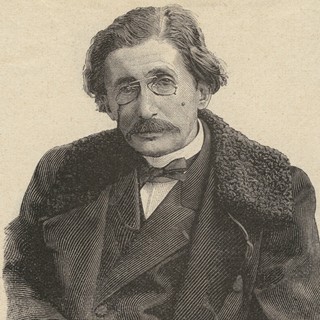The Laws of Imitation
"Gabriel Tarde was a French social psychologist, sociologist, and criminologist. In The Laws of Imitation (1880), he suggests that imitation drives the development of language and the evolution of institutions and the arts. The interrelated categories ‘invention’, ‘imitation’, and ‘opposition’ stand at the heart of Tarde’s sociology. New ideas spread via imitation, those that resemble existing norms being more readily imitated. There are three laws of imitation: (1) the law of close contact; (2) the law of imitation of superiors by inferiors; and (3) the law of insertion (where new behaviors either reinforce or replace customary ones)."
Summary Source: Trevor Merrill in Routledge Encyclopedia of Modernism

Photo Credits: Eugène Pirou (n.d.) Photo Source: Universitè Paris Citè Portrait Collection, ID: CIPB0463

